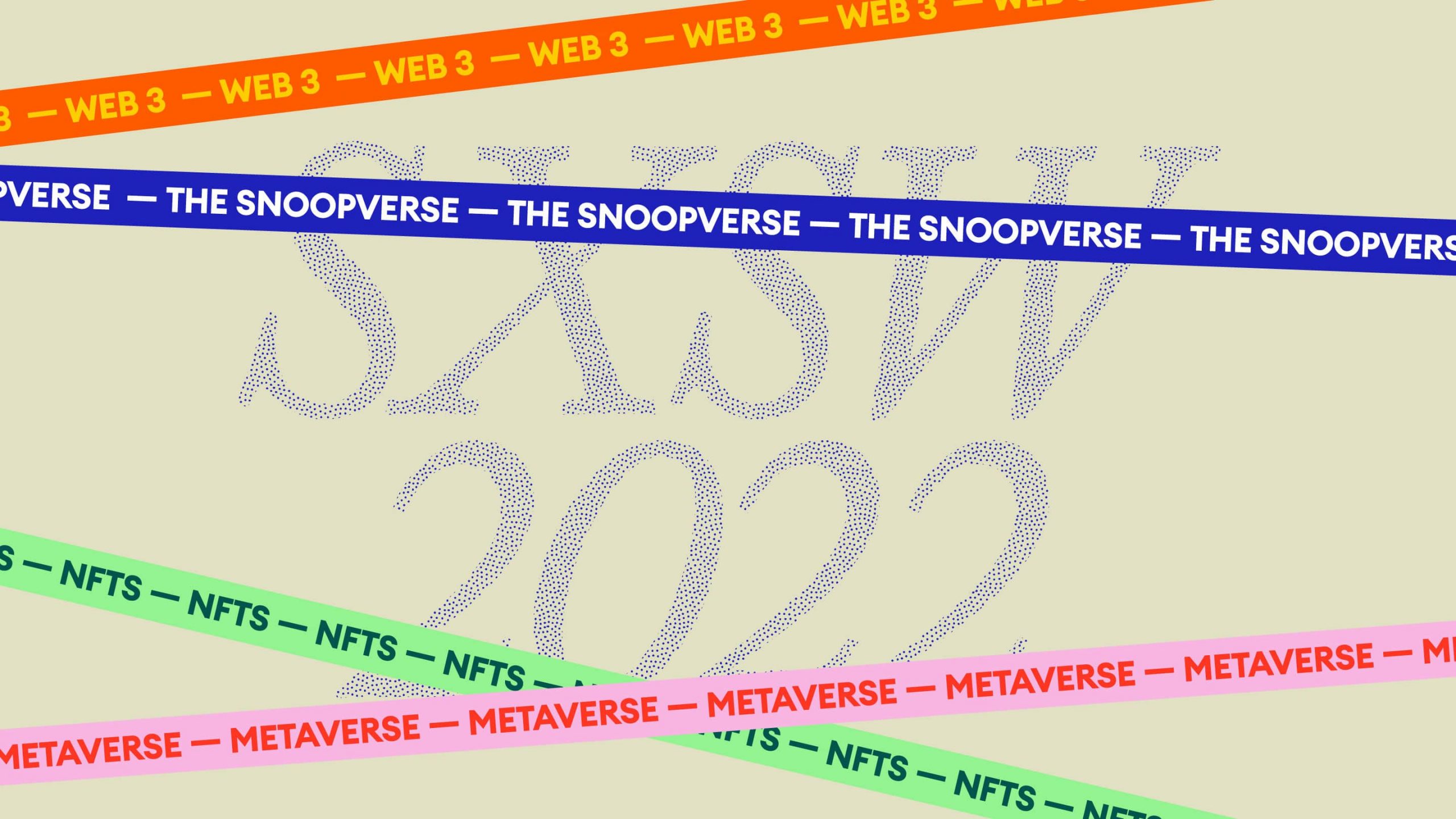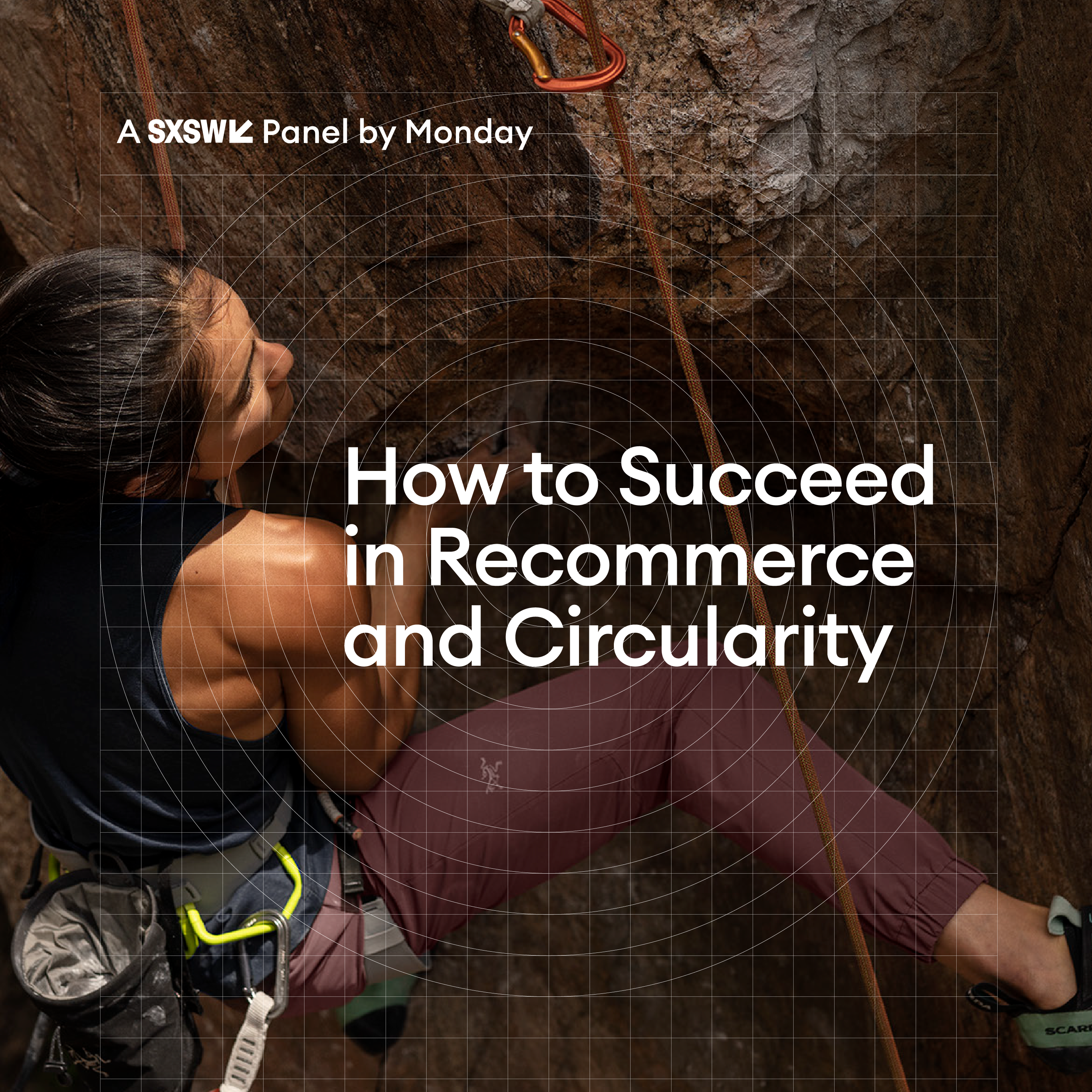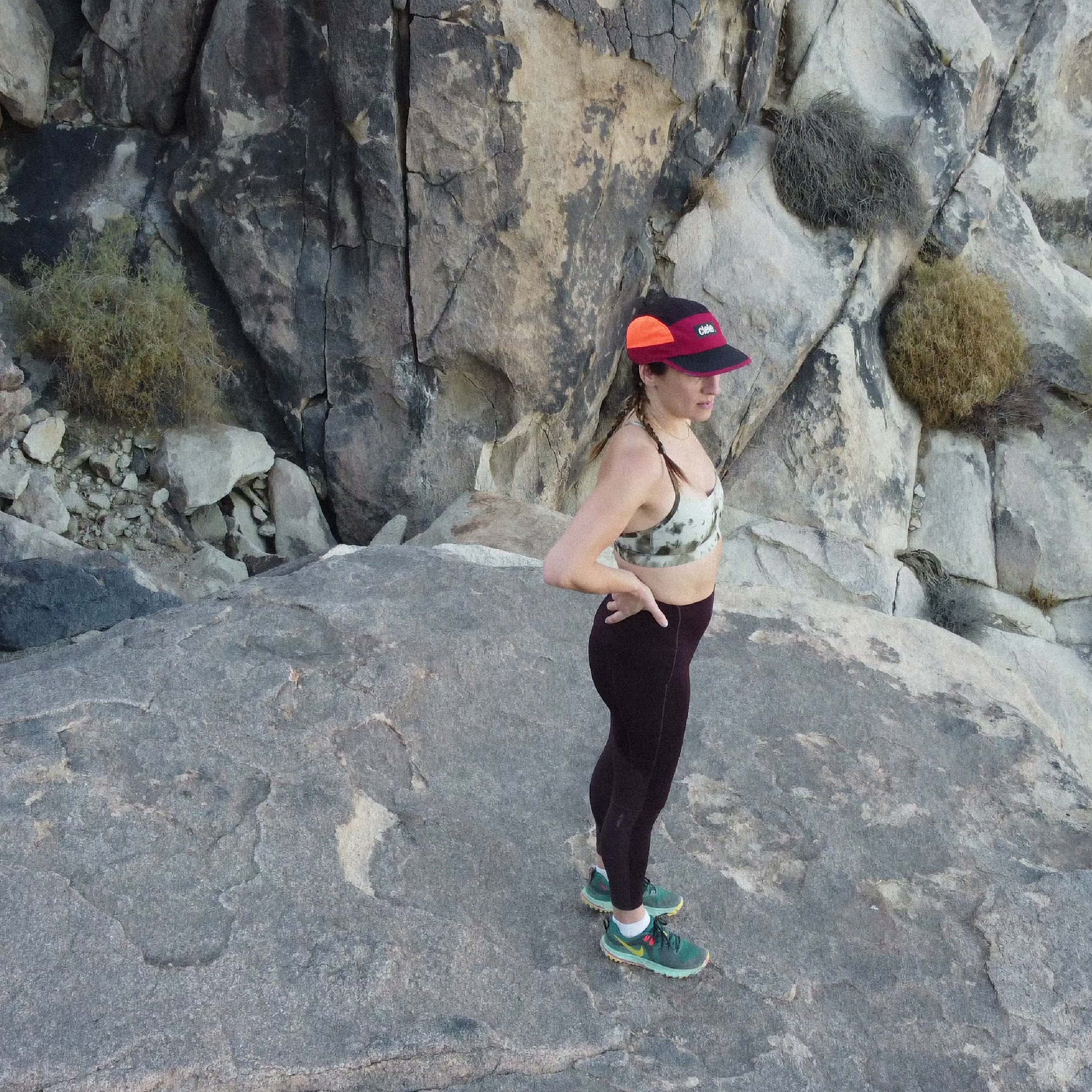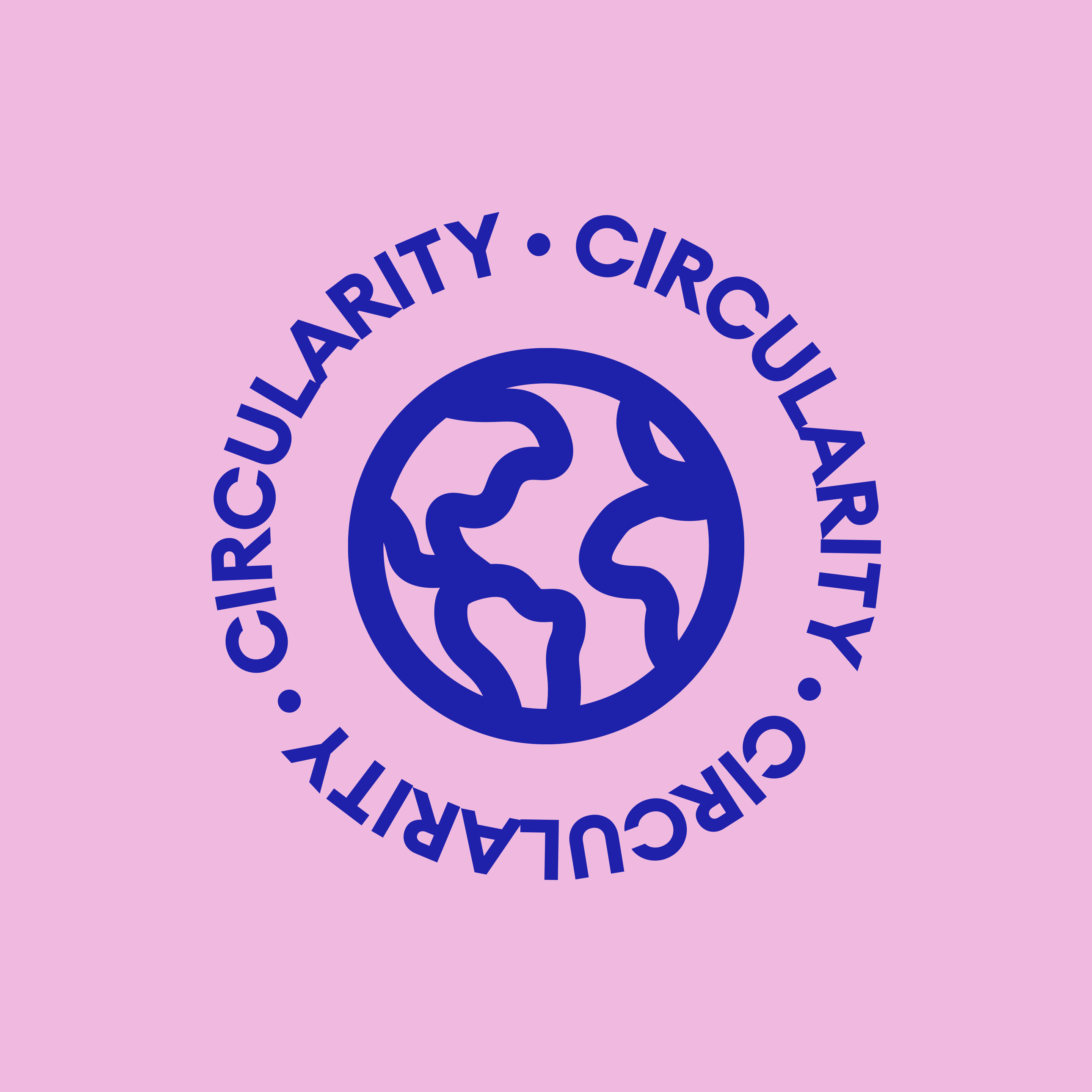Hi marketers.
If you, like me, want to die a little at the thought of spending your non-working hours living in a digital universe (or developing a marketing strategy for that universe). Or if you, like me, just have a hard time assigning value to a digital image of a rainbow-barfing doodle, then this one is for you.
Every March (except the last two, of course), Team Monday descends on Austin, TX, for the nearly indefinable hoopla that is South by Southwest (SXSW).
The truth is, SXSW is whatever you make of it—raging music festival, nerdy film conference, city-wide catwalk, tech-bro posture-fest—it’s a choose-your-own-adventure of learning and experiences.
For me, SXSW 2022 was a personal immersion into all things Web3.
NFTs, the Metaverse, Blockchain, decentralization—I devoured it all (with a side of equity/inclusion, reproductive rights and Lizzo). I came out wiser and with a spark to wield this technology for good—to counter the hype-induced panic many of my fellow brand marketers are likely feeling about stepping into a new era of the internet.
With that in mind, here are the four things I took to heart in my SXSW learnings, and hope you do too.
1. Don’t overthink Web3—it will sort itself out
Web 2.0 was a heyday for marketers—suddenly the internet was dynamic, interactive and peer-to-peer. Working in digital meant so much more than just building static websites—we invented hundreds of jobs that didn’t previously exist: content creator, social media manager, UX designer, PHP Ninja and, oh lord, “influencer.”
Enter Web3—the internet, decentralized thanks to Blockchain technology—dependent on a system of publicly traceable and tradeable “tokens” that fractionalize ownership. This is the system enabling commerce on the Metaverse (more on that later) and all the hyped-up crypto and NFT rushes you keep hearing about (more on that later too). In the most optimistic view, it’s the internet without the power dynamics, owned by the people. In less optimistic terms, it’s just a snazzy rebrand of cryptocurrency in which the rich will get richer.
Here’s my takeaway for brand marketers: don’t panic if you don’t have a Web3 strategy yet. Just like all the brands that resisted getting on Facebook back in 2010 (and now haven’t posted since 2019), it will sort itself out (either by becoming obvious how you should use the technology or obvious that you shouldn’t), and there is room for everyone.
But if you want to take the plunge, think about Web3 as an opportunity to connect and empower your community—to add value and incentives, or new paths to relationship building. Which brings us to NFTs…
2. You can use NFTs as a brand builder
NFTs were the must-have accessory at SXSW (even if no one could see it unless you opened your digital wallet), but are still rife with controversy. “Minting” a digital asset (that’s the process of recording the asset on the Blockchain) is super energy-intensive and the jury’s still out on the long-term value of digital art speculation.
It all reminds me a bit of the 1990s Pogs craze—they’re valuable until they’re not. And by now they are ubiquitous—literally anyone can create an NFT. The value that came from the scarcity of digital collectibles a year or two ago is fading away.
But good news! My big SXSW takeaway is that NFTs are good for more than just quick/tenuous wealth building.
In the words of everyone’s favourite tech trend forecaster Amy Webb, right now, “We’re all chasing the shiny.” In her annual South-by keynote, she explained: “The next iteration of the web is real, and important… but digital collectibles, digital real estate, NFTs—these are not the long-term trends.”
It’s the infrastructure that matters, explains Webb. Infrastructure that fosters accessibility, transparency and ownership. It enables small (mostly-)secure transactions in the Metaverse. It creates opportunities for fun value-adds (own the sneakers in the Metaverse and a pair IRL!). You can use them to fundraise (make a donation, get a digital asset to show for it), crowdfund your new product launch (where buyers own a fraction of the IP) or offer fractional rewards for your biggest fans.
The bones behind NFTs are about so much more than speculation when they are earned instead of bought in a land-rush.
Realtalk though: if your brand, like our own here at Monday, is rooted in care for the planet, then the energy-intensive process of minting NFTs really might not be for you. (FYI, one NFT can, on average, have the same carbon footprint as an individual’s monthly electricity usage.) Consider your audience carefully before you step into the space.
3. The Metaverse is you
As someone born smack in the transition between GenX and Millennial, I’m not afraid to admit: I didn’t know what the Metaverse was until recently. Is it Roblox? Is it Second Life? (yeah, kind of.) Is it the Sims? (It’s not the Sims.) Will I be moving through life wearing a VR headset in a couple of years? (You might, but I probably won’t.)
My SXSW immersion taught me that the Metaverse is many things. In the words of Zuck, and quite a few others, it’s the “embodied internet.” It’s the expression of ourselves in digital worlds (like Second Life, Roblox—or fast-growing platforms like Decentraland and The Sandbox). But it’s also VR, AR, smart glasses—anything that bridges the gap between the digital and the physical worlds.
There is no single Metaverse—one alternate land where everything happens. True to the spirit of Web3, it’s decentralized. If you want proximity to fame in the Snoopverse, you’ll have to join The Sandbox. If you want to participate in Metaverse Fashion Week, that’s in Decentraland.
If you’re wondering if, when or how to make your brand’s entry into the Metaverse, start by going back to your brand pillars. What do you stand for and who is your audience? Can you create a digital experience that serves your primary persona and stays true to your brand pillars?
Your entry into the Metaverse might not look like an NFT version of your most popular puffer jacket—instead it might be an AR tool for birding, foraging or route-finding. It might be a tool that analyzes your running stride. It might be something you earn as a badge of honour for repeat participation in real-life events.
In the words of Second Life founder Phillip Rosedale, in this iteration of the web, “The new killer app is other people.” With that in mind, how can you leverage this new embodied technology to create better human connections and to help people fall more in love with the planet?
Speaking of which…
4. We all still want human connection
Here’s the thing SXSW and the Metaverse have in common: their magic lies in proximity.
The Metaverse is actually about gathering and, ironically, has some constraints that match the physical world. You can’t teleport in the Metaverse—you have to (digitally) move through space via an avatar or your own body. Those big Metaverse land grabs are all about being physically close to other high-profile places or celebrity avatars. That’s why someone spent $450,000 on the “land” next to the Snoopverse.
So Priya Parker’s SXSW opening keynote—On Gathering—set just the right tone. For most of us, South-by was our first large-scale gathering in two years. Two years without serendipitous connections. Without hallways, doorways, coffee lines—the infrastructure for unexpected connections and spontaneity. Suddenly we were in-person, redefining what it meant to be in space together—determining if we should be wearing masks, shaking hands, close-talking with strangers. Priya guided us to consider how we might reshape the rules of engagement in ways we hadn’t thought to or been allowed to in the past.
For marketers, this time is a reset and an opportunity to rethink those IRL gatherings that felt core to our work pre-pandemic. As Priya perfectly articulated: “We don’t gather to escape—we gather to engage.” In the work we do for brands, it’s now our job to shape meaningful moments of engagement. She suggests we start by asking “What is the need here?” Then facilitate deliberate junctures for connection that point everyone toward that need. And don’t just throw humans into a space together—be a guide, marking a beginning, a middle and an end. Real brand love can happen when we foster serendipity.







